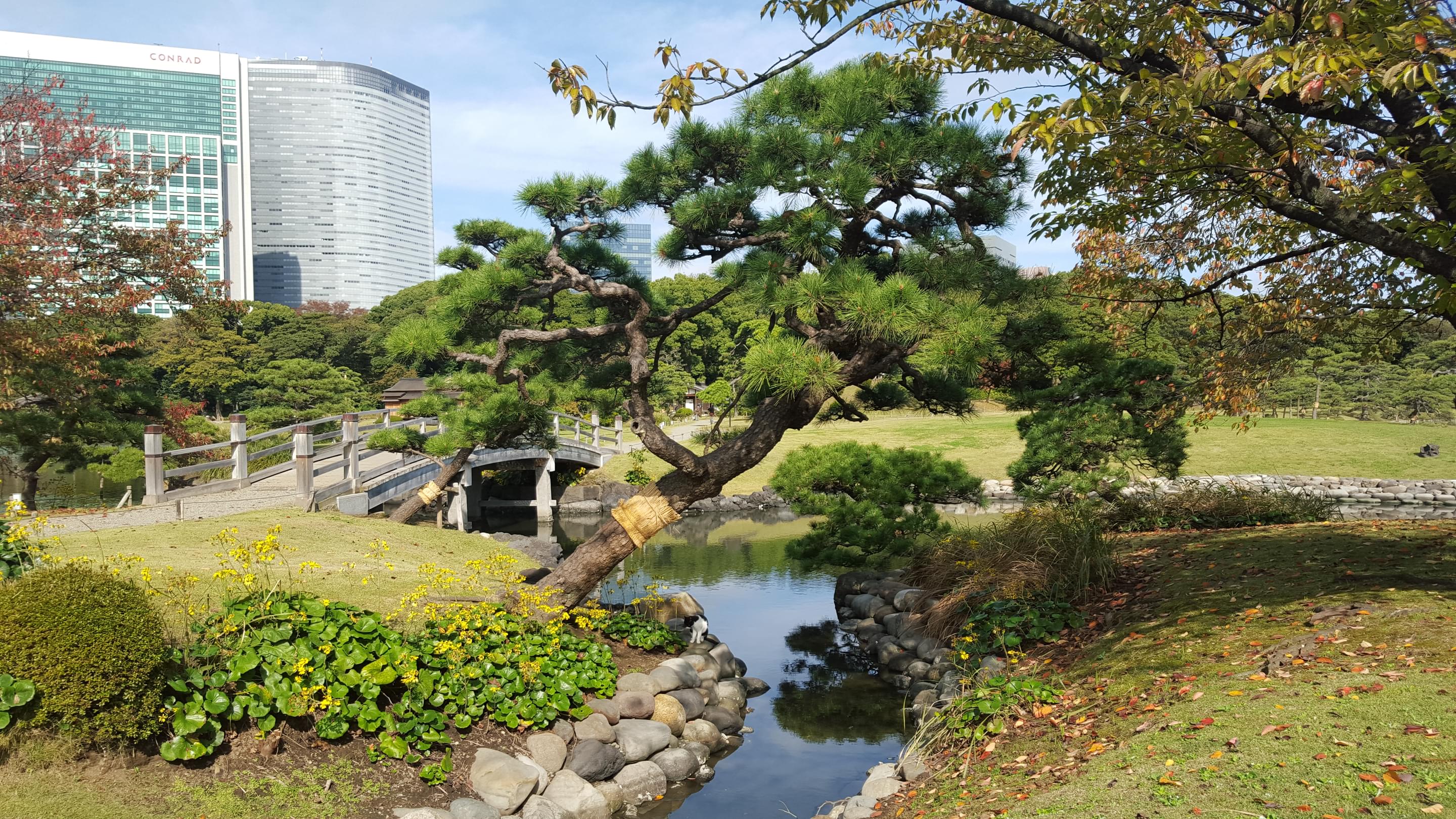Hamarikyu Gardens, located in the heart of Tokyo, is a picture-perfect and historic public park that blends traditional Japanese garden aesthetics and urban modernity. The garden was originally a feudal lord's residence and duck hunting grounds; however, it was opened to the public in 1946. This tranquil oasis is spread over approximately 62 acres of land between the city's skyscrapers and Tokyo Bay.
Hamarikyu Gardens, located in the heart of Tokyo, is a picture-perfect and historic public park that blends traditional Japanese garden aesthetics and urban modernity. The garden was originally a feudal lord's residence and duck hunting grounds; however, it was opened to the public in 1946. This tranquil oasis is spread over approximately 62 acres of land between the city's skyscrapers and Tokyo Bay.
Inside the Hamarikyu Gardens, you may eye-witness picturesque ponds, tea houses, and seasonal flowers, offering enough chances to unwind and relax. The Shioiri Pond, with its central Nakajima-no-Ochaya teahouse, offers visitors a place to enjoy matcha tea while admiring the surrounding beauty. Seasonal flowers, including peonies, cherry blossoms, and plum blossoms, change the tapestry of colors throughout the year. If you are tired of the everyday hustle and bustle of city life and looking for an escape, head to the Hamarikyu Gardens, which are often featured in Tokyo tour packages.
Highlights
• Admire the beauty of the ancient pine tree located at the center of Hamarikyu Gardens.
• Observe the unique tidal pond, with water levels changing with the tide which adds dynamic beauty to the landscape.
• Explore historical Kamoba, offering insight into Edo-period duck hunting practices.
• Enjoy the sunset views from the garden while enjoying snacking with your friends and family.
How To Reach
1 By Car: Hamarikyu Gardens is located 16.4 km from the Tokyo city center. It will take around 26 minutes. You may take a local taxi to visit the Hamarikyu Gardens.
2 By Foot: Hamarikyu Gardens is located 12.6 km from the Tokyo city center. It will take around 3 hours 2 minutes.
Best Time To Visit
Hamarikyu Gardens remains open all through the year.
1 Best Season: Hamarikyu Gardens remains attractive in all seasons. However, the best time to visit Hamarikyu Gardens is between late November and Early December.
2 Best Day in the Week: Weekends are the most ideal time to explore Hamarikyu Gardens.
3 The Best Time of the Day: Early mornings are the best time of the day. You may also visit during the evening as the weather remains soothing.
Other Essential Information
- Wear comfortable and sturdy shoes because visiting the Hamarikyu Gardens means navigating through uneven terrains and narrow lanes.
- Keep essentials such as an umbrella and SPF handy to protect yourself from the scorching heat.
- Carry a water bottle to stay hydrated while exploring Hamarikyu Gardens, especially in the hot and humid weather.
- Be mindful of motorbikes and other vehicles while crossing the streets, and use caution when exploring busy intersections.
- Indulge in the delicious street food offerings. Throw garbage carefully in the trash bins.
Explore the Shioiri Pond and Nakajima-no-Ochaya Teahouse
Shioiri Pond at the Hamarikyu Gardens is a striking feature of the garden, which draws in seawater from Tokyo Bay. As the tide appears, the sea water level changes, adding dynamic elegance to the garden’s overall beauty and landscape. Within the Shioiri Pond, there is a famous Nakajima-no-Ochaya Teahouse. It is an elegant wooden structure that people can access. Travelers visiting here can indulge in the delicious food and Japanese tea while enjoying the mesmerizing surrounding views. The teahouse gives a glimpse of the Japanese tea culture, grabbing every traveler’s attention.
Witness a 300-Year-Old Pine Tree
The garden is popularly known for its 300-year-old pine tree, which symbolizes longevity and endurance. This is a larger-than-life tree which has been crafted carefully for centuries now. Additionally, it stands as a testament to the art of bonsai and Japanese gardening techniques. The tree successfully depicts the garden’s past and gives a glimpse of Japanese culture. Over the years, this tree has evolved as a prime spot to click pictures as it symbolizes the true beauty of nature.
Stroll Through Peony Garden and Seasonal Blossoms
Hamarikyu Gardens is renowned for its seasonal flower displays, with the Peony Garden being a major highlight. The Peony Garden bursts into vibrant color each spring, attracting visitors with its large, fragrant blooms. The garden showcases different seasonal flowers like cherry blossoms, plum blossoms, and irises, offering a vibrant array of colors all year round. These floral displays are carefully planned to ensure that there is always something in bloom, making each visit to the gardens a unique experience. The seasonal blossoms enhance the garden's aesthetic appeal and are a key attraction for both local and international visitors.
Visit Duck Hunting Grounds and Kamoba
Another historical aspect of the famous Hamarikyu Gardens is the duck hunting ground, which was built during the Edo period. The prime aim of building this ground was to organize the shogunate’s hunting activities. Inside the garden, there are various duck hunting blinds that are used for capturing and luring ducks. These blinds are set up carefully all around the garden, offering an insight into the Edo period's traditional practices. Although duck hunting is not promoted at the Hamarikyu Gardens anymore, it offers an educational program for all travelers and locals alike.

